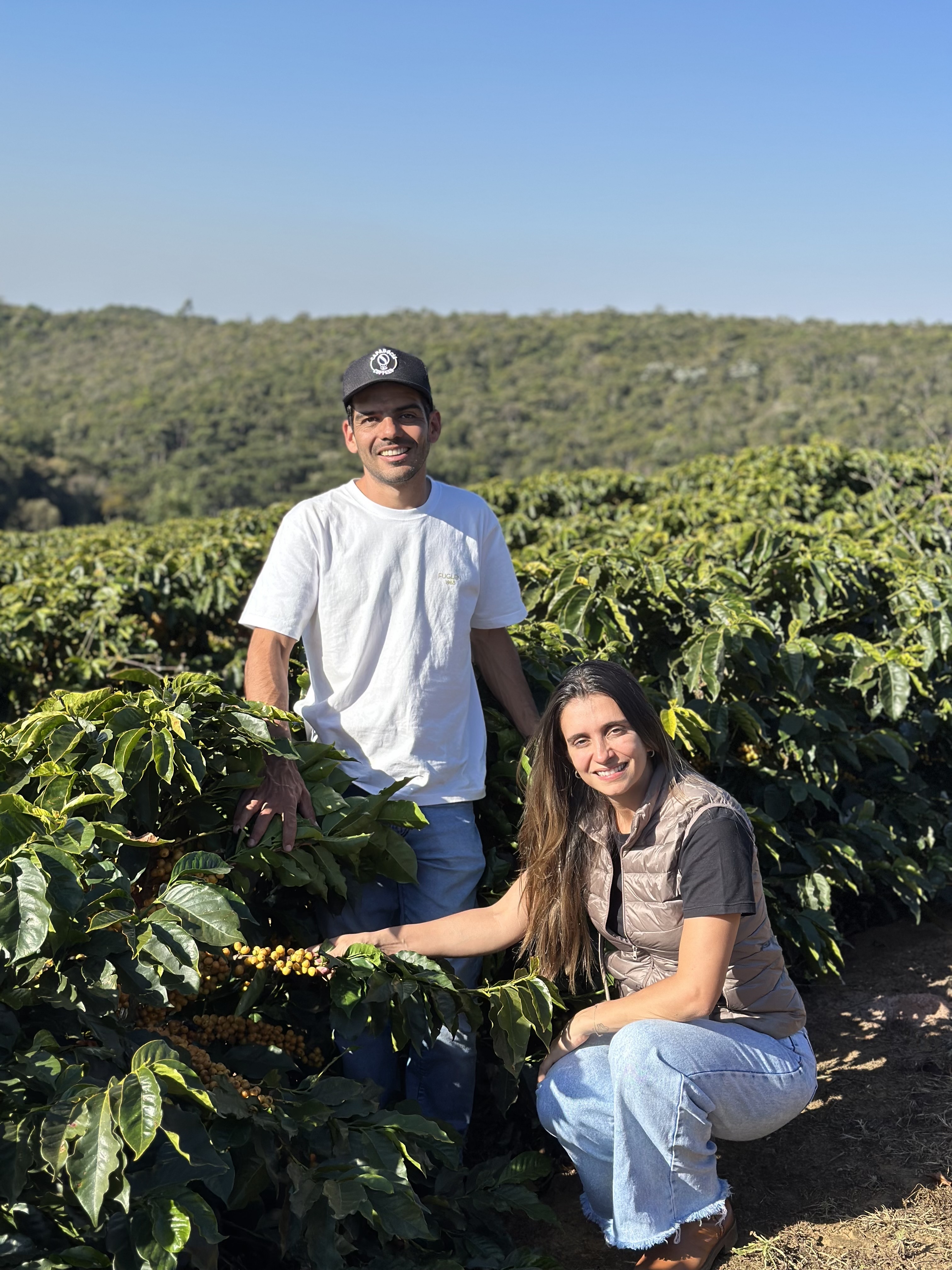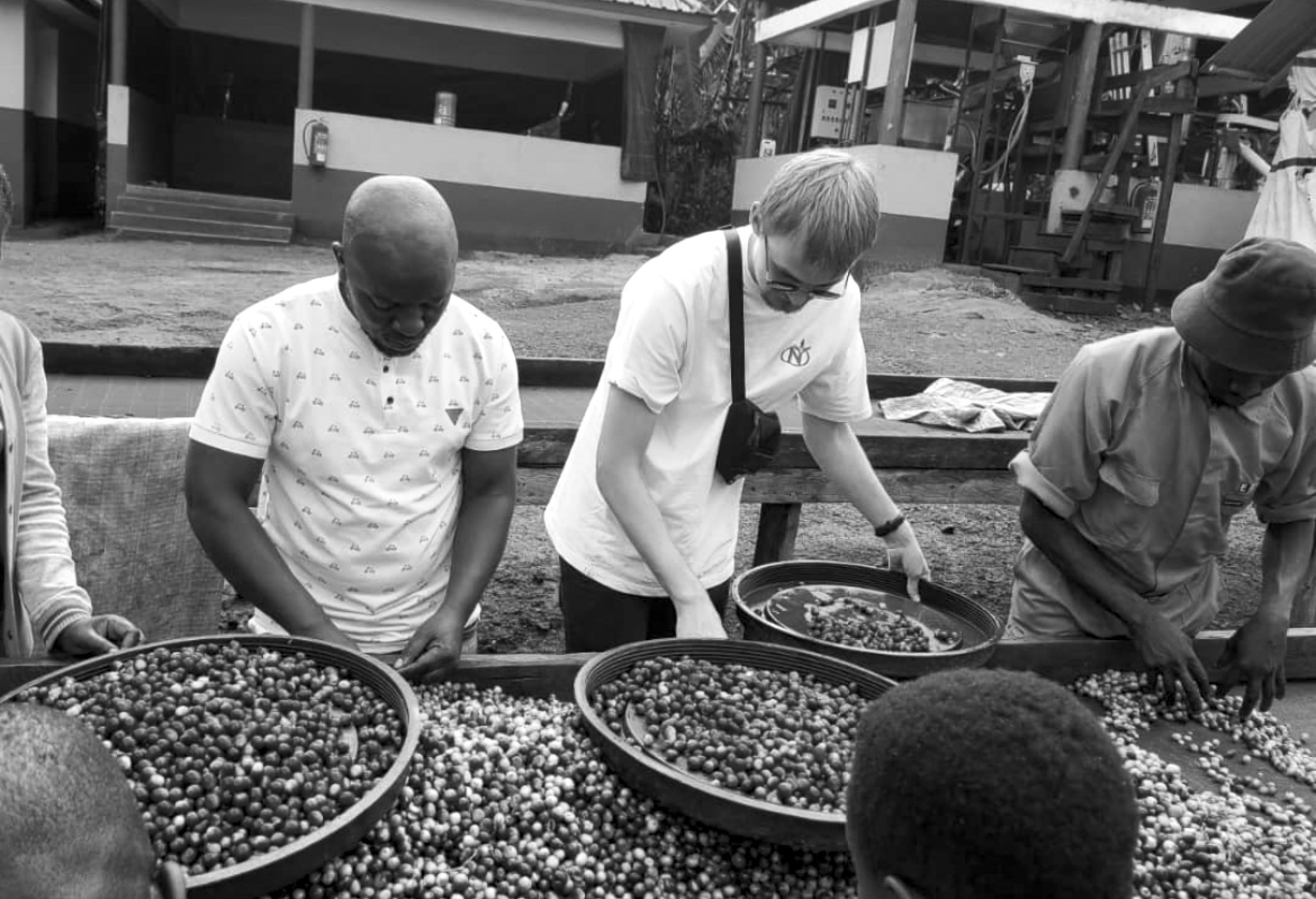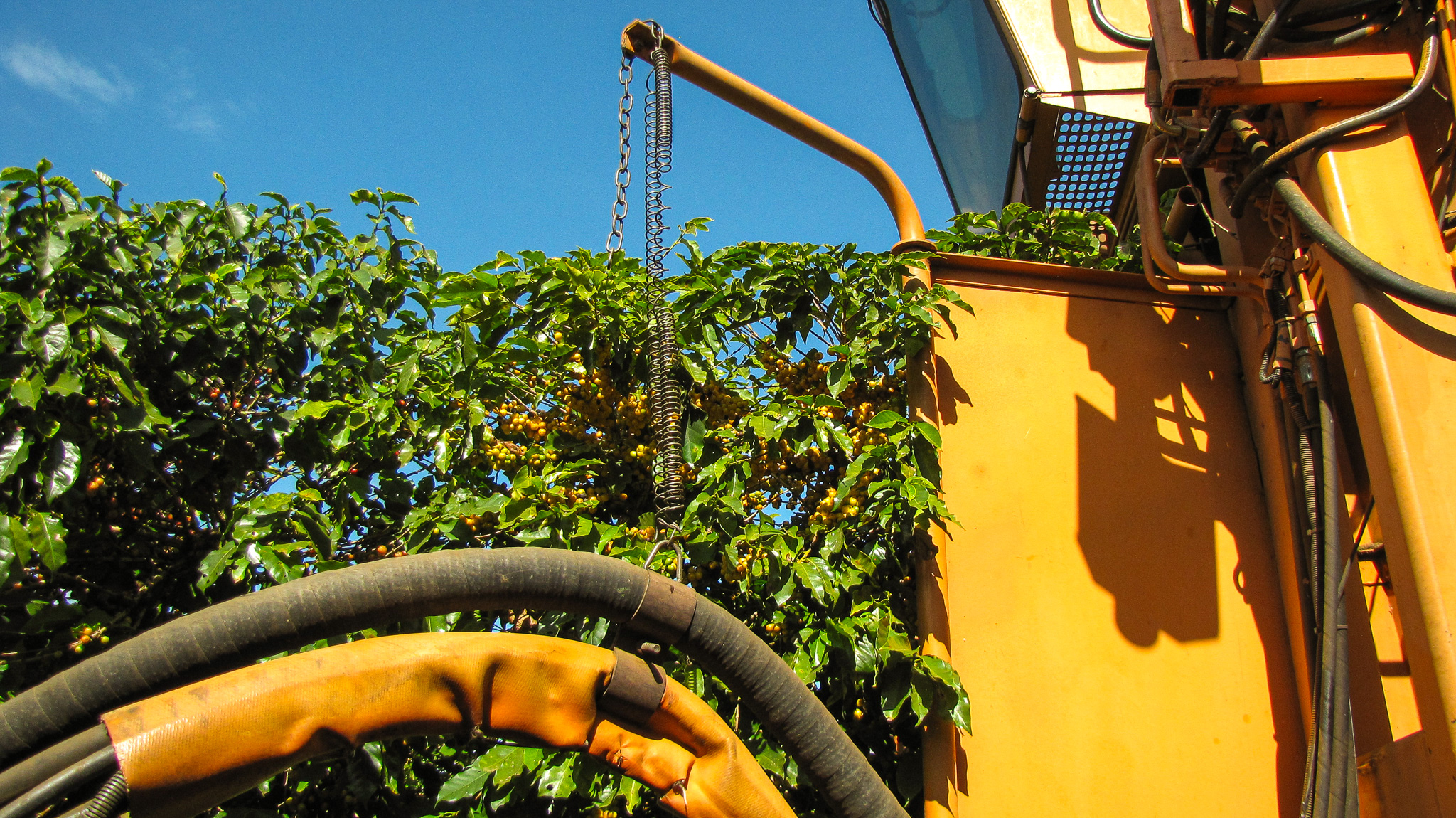Seeing coffee at its origin is key to how our procurement team works. It’s not just about tasting coffee, but about understanding the farms, our long-term partners, and the work behind every lot. In late August, Josh travelled to Brazil, along with some of our customers, visiting Brazilian coffee farms and producers to bring you direct updates of your coffee from Brazil.
On the Ground in Brazil
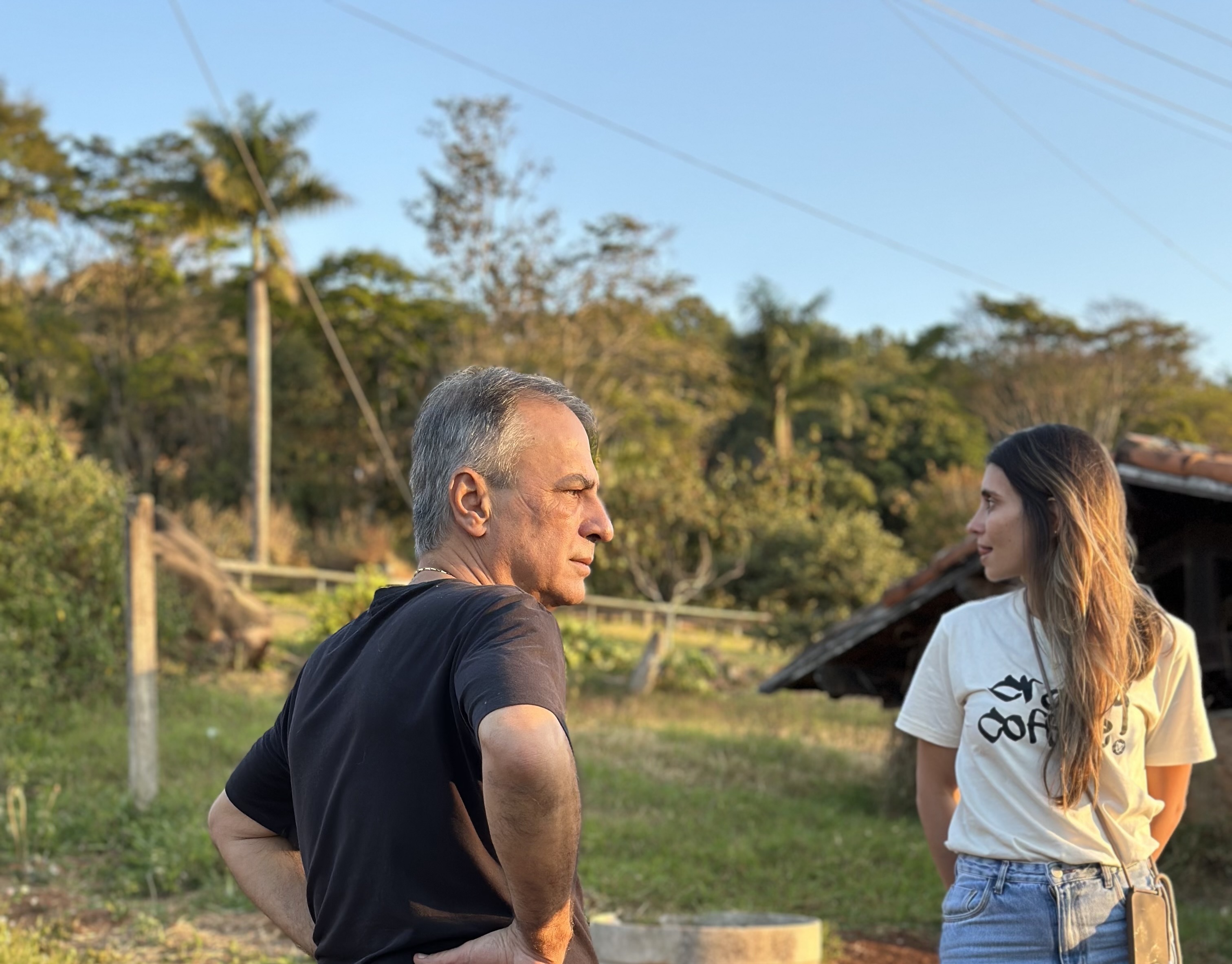
The new era of Jaguara - Specialty Coffee Producer from Minas Gerais
Our latest visit to Brazil began at a place very close to our heart: Jaguara. For years, we’ve worked closely with Natalia and her team, so it was special to join her at the beginning of a new chapter, Toca da Jaguara.
Natalia officially took over the new farm in June, but her connection to it goes back much further. She first heard about it in 2019, when she even judged a competition in which the coffee was placed. Since then, she has stayed in close contact with Leila, the former owner, quietly keeping an eye on what she called her dream farm. When the opportunity finally came to take it on, together with her father, she didn’t hesitate.
I had the chance to stay at the farm on the very first night that Natalia and her aunt, Clivea, spent there after its renovation. Together with Yusho from Fuglen Japan and Beethoven, the farm dog, we explored the property, walked through the coffee plots, followed a stream in the nature reserve, and spotted Jacu birds in the shade trees. It was immediately clear that Natalia’s vision for her Brazilian coffee farm Toca da Jaguara was not just a working farm but also a retreat for family and coffee friends.
Natalia also shared what she looks for in a farm. Her criteria come from years of experience as a producer, buyer, and exporter: high elevation (this farm sits above 1300 masl, unusually high for Brazil), natural water sources like the spring in the reserve, protection from wind, existing healthy trees with at least three varieties, solid drying infrastructure, and a house to make the place feel like home. Toca da Jaguara has all of this and more. The microlots from this first season already show promise, but Natalia is thinking much further ahead. She has plans for wooden box silos to rest and store coffee, a winch system for moving tonne bags, fermentation tanks, and expanded raised bed capacity, and more! It will all happen step by step, but the direction is clear, and I’m excited to be part of the journey.
A few days after our first visit, I returned, this time joined by the Grind team. Once again, Kika (Clivea) cooked up a storm for dinner, and we all muddled through making caipirinhas. With the harvest complete and the next season approaching, the family is also preparing to plant a new area with the Paraiso variety in December, a process that will take two to three weeks, alongside some general farm maintenance.
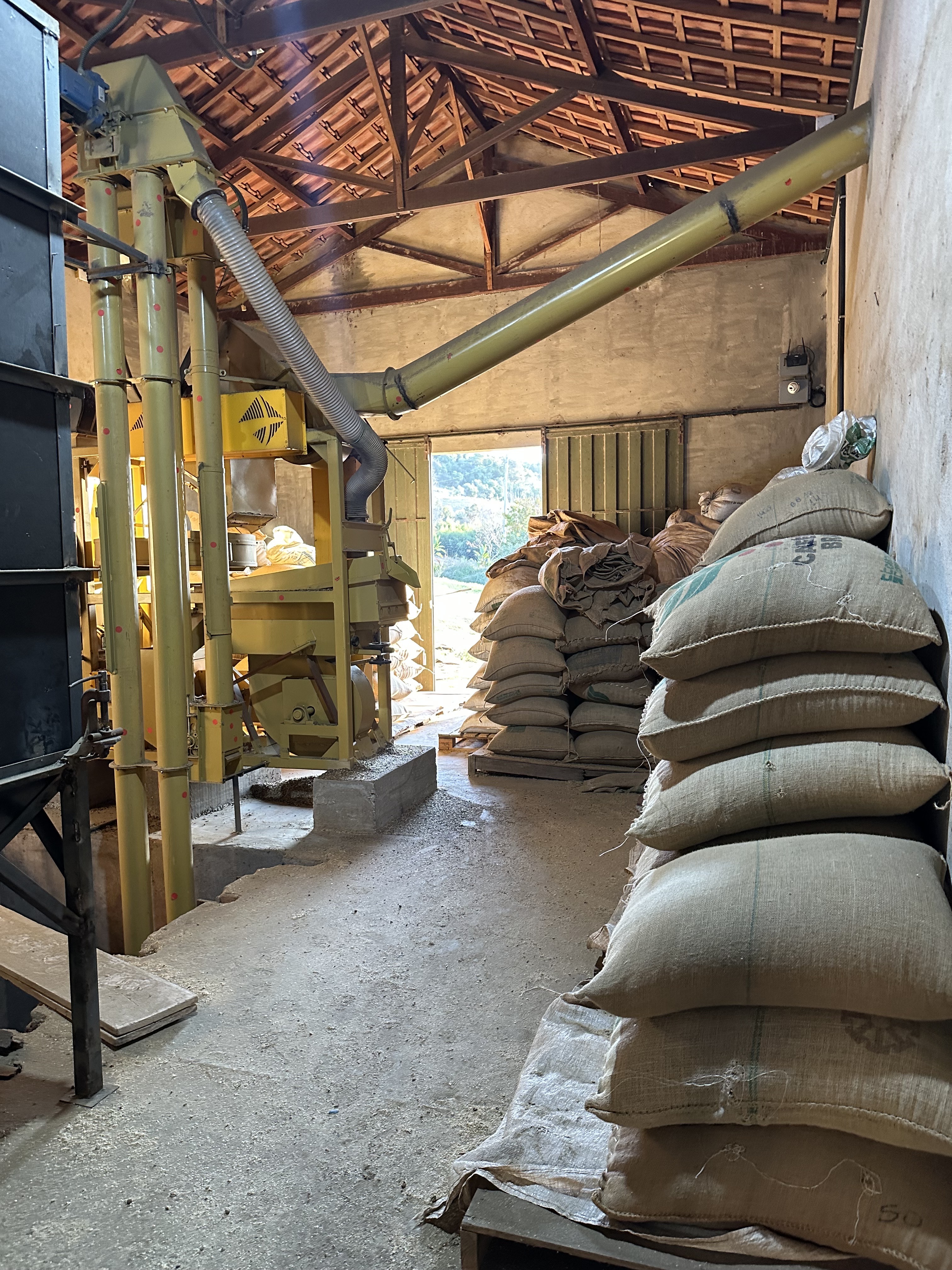
Cupping Coffees in Muzambinho
From there, we continued on to Muzambinho, a lesser-known but promising specialty coffee region in Brazil. At NKG Stockler, we spent time cupping and covering a lot of ground to identify potential sourcing areas of interest for the future. This wasn’t my first visit, and after more than a year of aligning on quality, profiles, milling, and logistics, we finally had a concrete plan.
The priority this time was the Muzambinho Collective, a project that first took shape after an impromptu visit to the area in 2024 - Passing through Muzambinho, we stopped to greet a long-serving member of the NKG Stockler team. We cupped a few samples that day, had a brief chat with the team, and left, but the coffees stayed with us- Over the following year, as our team cupped blind sets from different regions, Muzambinho kept standing out.
Searching for a profile over the course of a year is one thing; building a consistent blend during the harvest itself is another. This time, the rounds of cupping were more intensive, with selections to be made during a narrow harvest window to prepare coffees for export in time. Before we arrived, the Muzambinho team had already separated potential lots from the previous week. We cupped these pre-selected lots again, refining the profile based on coffees from the current harvest.
From Hundreds of Samples to Standout Specialty Coffee at Muzambinho Collective
We began by cupping unsorted samples (bica corrida), including all grades and defects. This allowed us to move efficiently through many deliveries while getting a true sense of overall quality and potential issues like defects or phenol. Coffees that cupped clean and fruit forward or distinct and sweet profiles, were kept for further evaluation, with many standing out enough to be considered as potential microlots. The selected coffees were then re-cupped once sorted and prepared as SC16+ export-ready lots. Sorting reduced the volume by about half, what remained was sold as commercial coffee, but the payoff was clear. The sorted samples showed greater sweetness and a more fruit-forward profile.
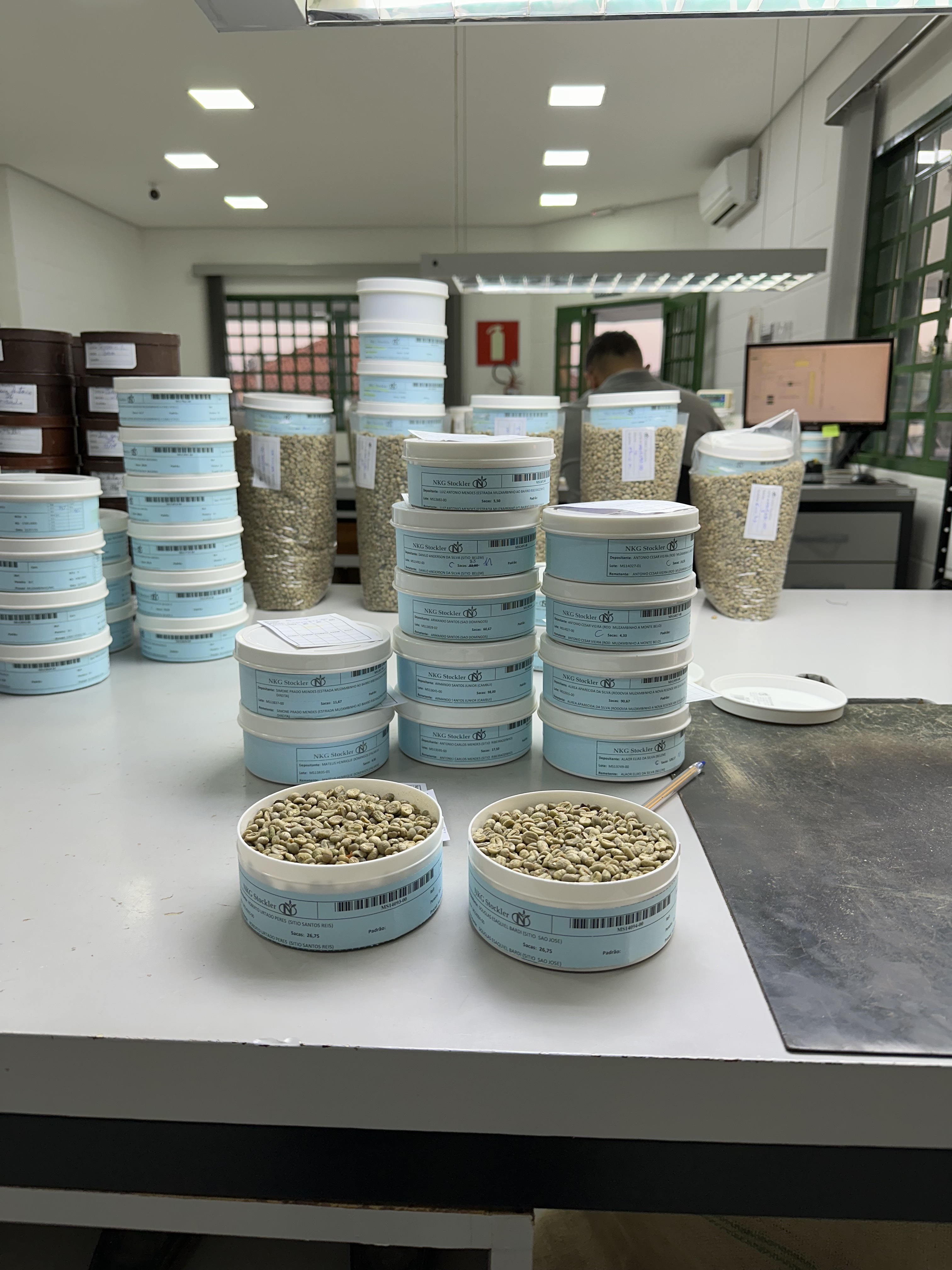
The final step was cupping the blended coffee across SC15+, SC16+, and SC17/18. SC15+ showed the core of the profile with depth and complexity but lacked some clarity, especially in the finish. SC16+ and SC17/18 were closer in profile, with the main difference being transparency and cleanliness, the higher screen was slightly more consistent in roast and cleaner in the cup. Based on this, we selected SC17/18 for milling.Throughout this process, we also explored peaberries. In a year where bica corrida was expensive and peaberry abundant, this presented an opportunity to create added value from already-separated coffees. The peaberries were re-cupped and allocated to our Muzambinho Collective PB.
Brazil Specialty Coffee Harvest and Market
For us, the focus remains unchanged: building long-term relationships and supporting producers through consistent buying, particularly of microlots and experimental processes. Brazilian Coffee is often associated with scale, yet farms like Toca da Jaguara are a reminder that innovation, ambition, and quality continue to thrive here.
For a more detailed update on the harvest and market in Brazil, see our previous article Preparing for Brazil: Harvest Update 2025



